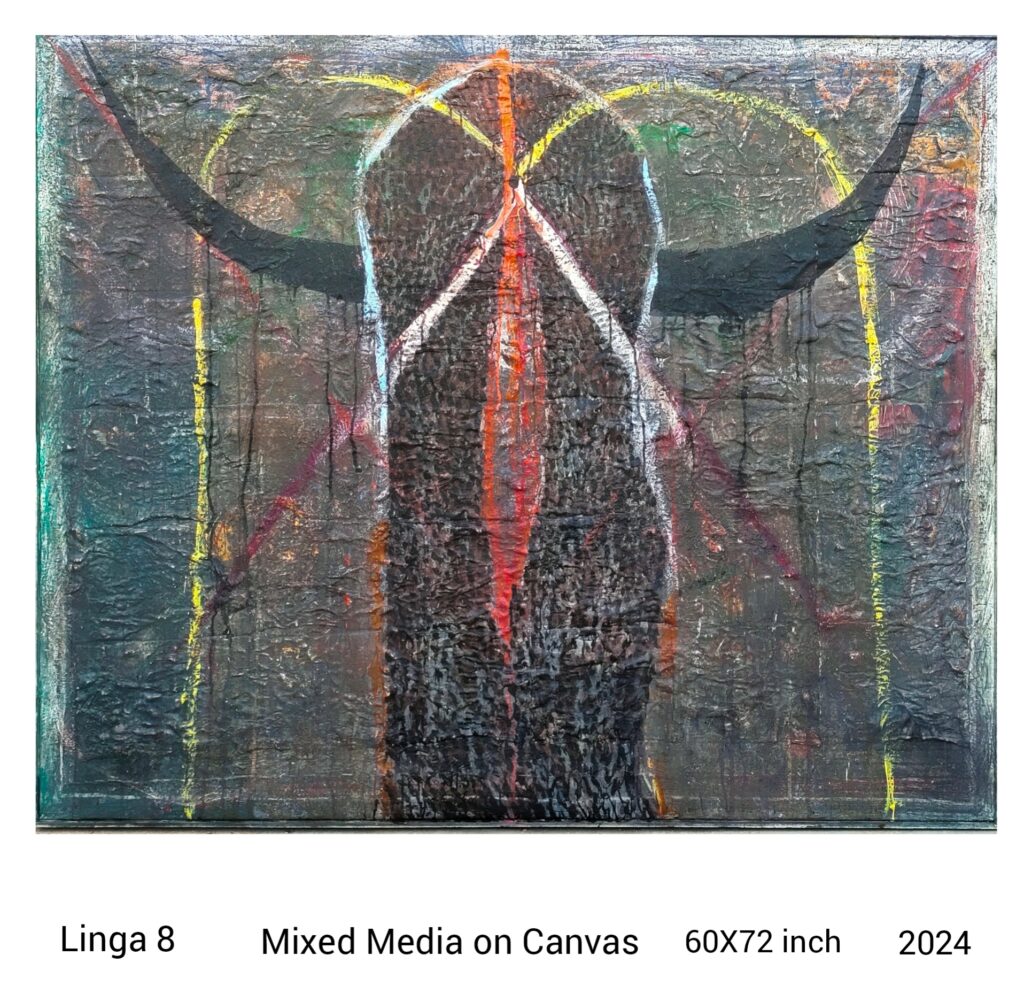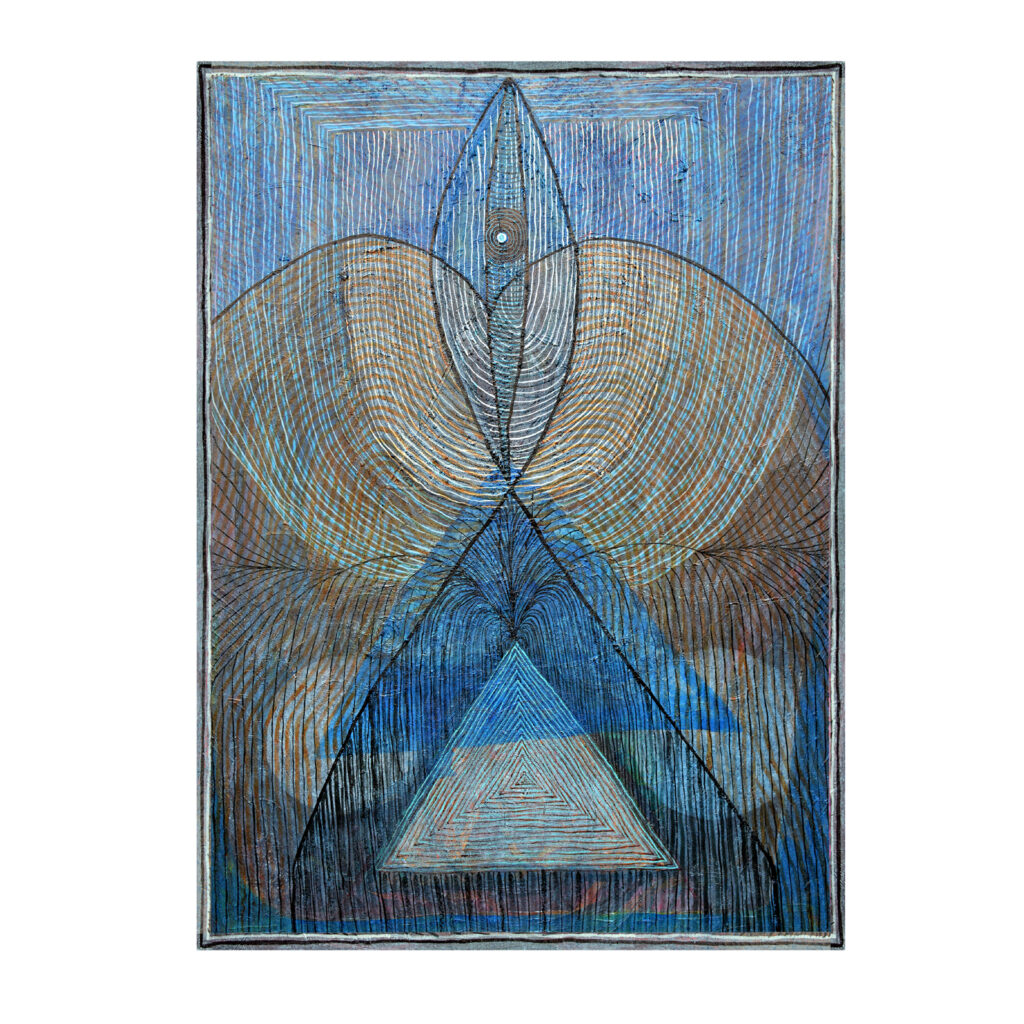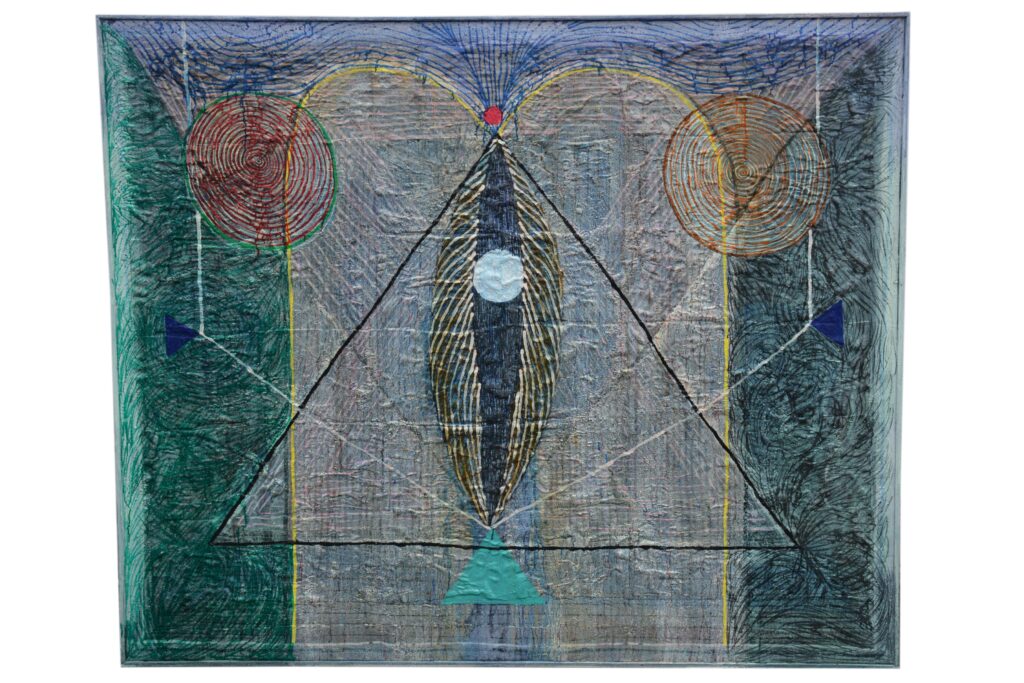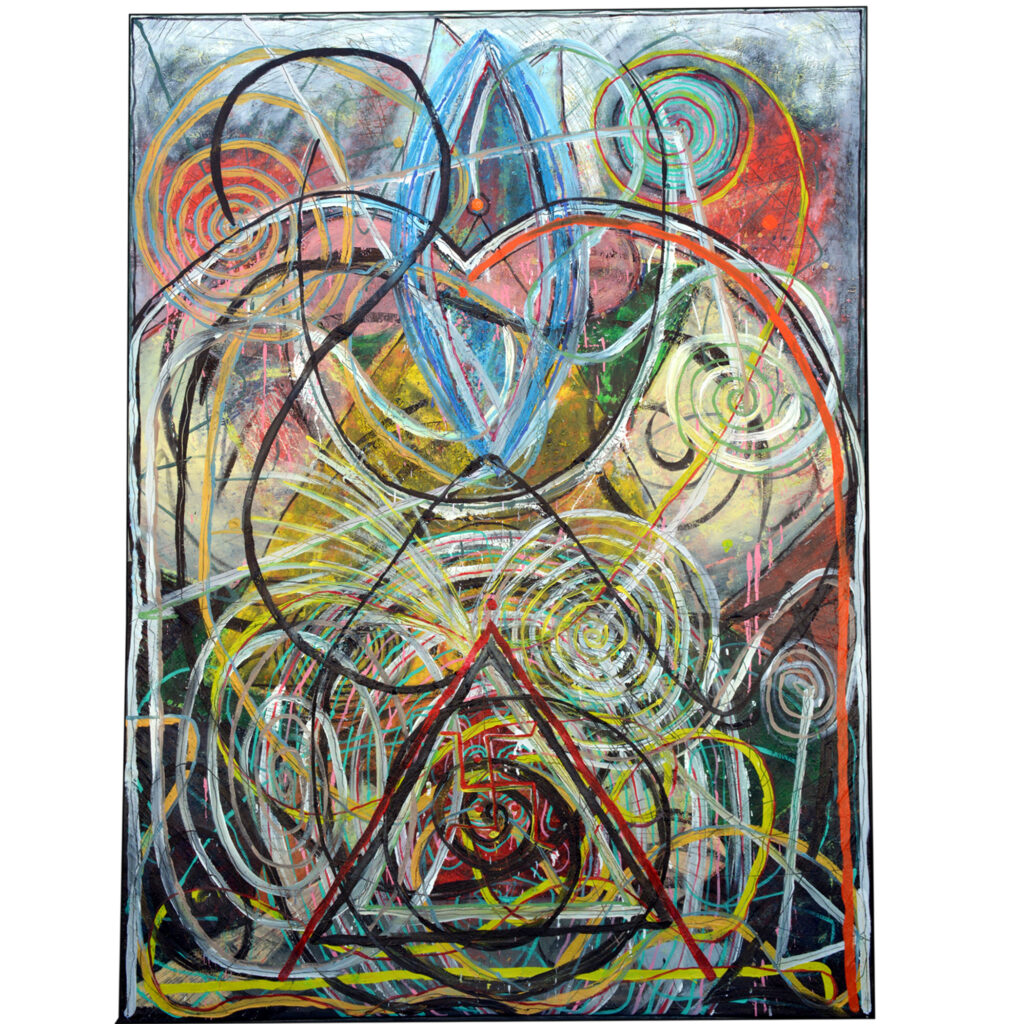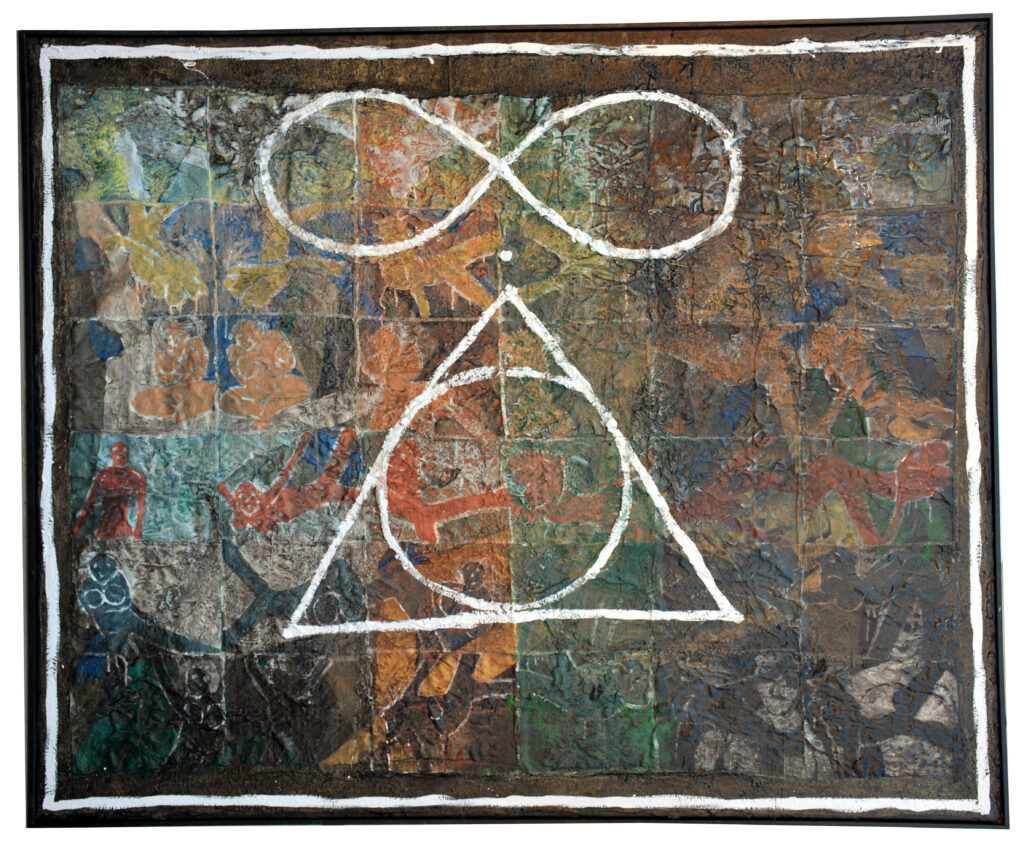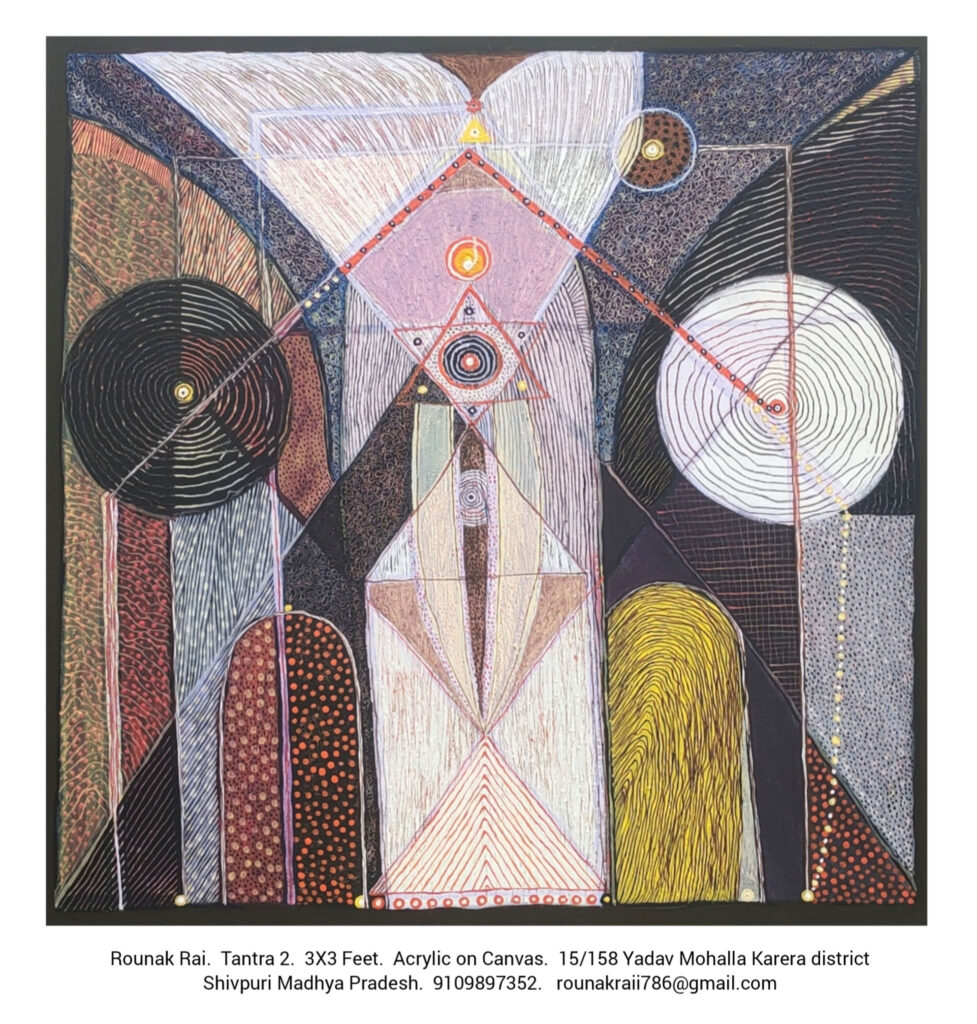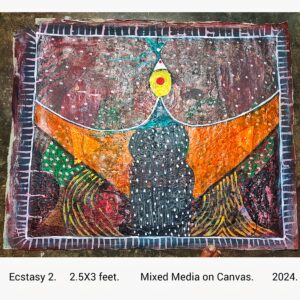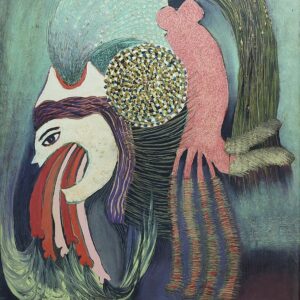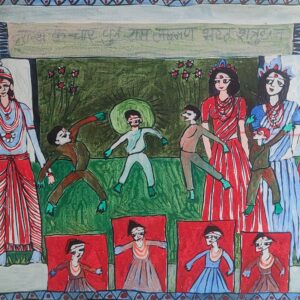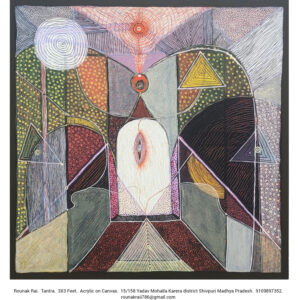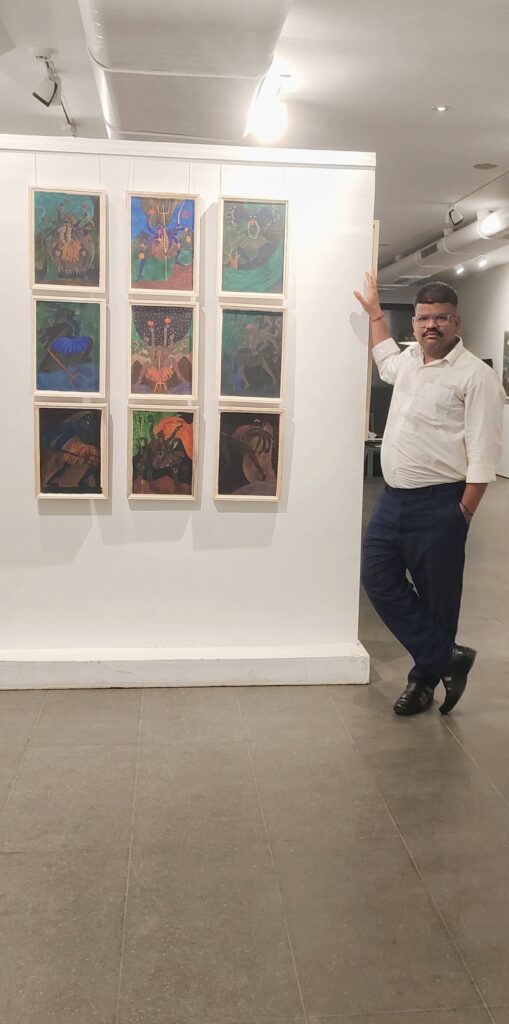
Rounak Rai
Pure Indian Artist – Folk + Contemporary = Rounak
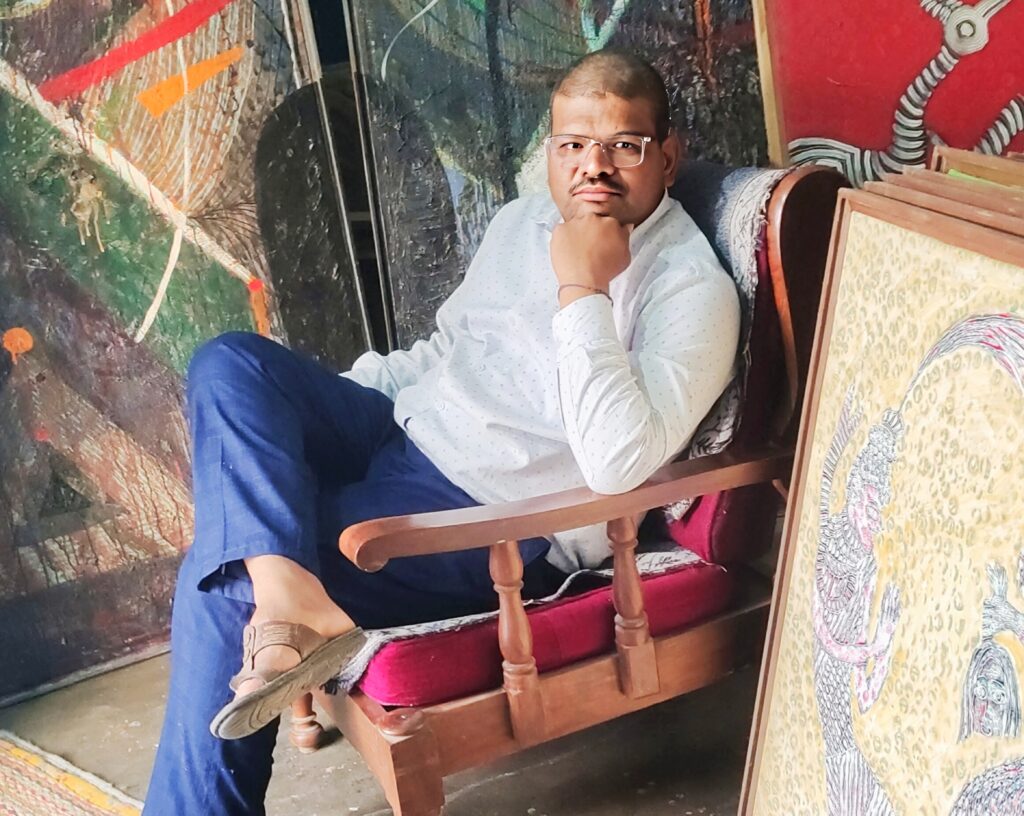
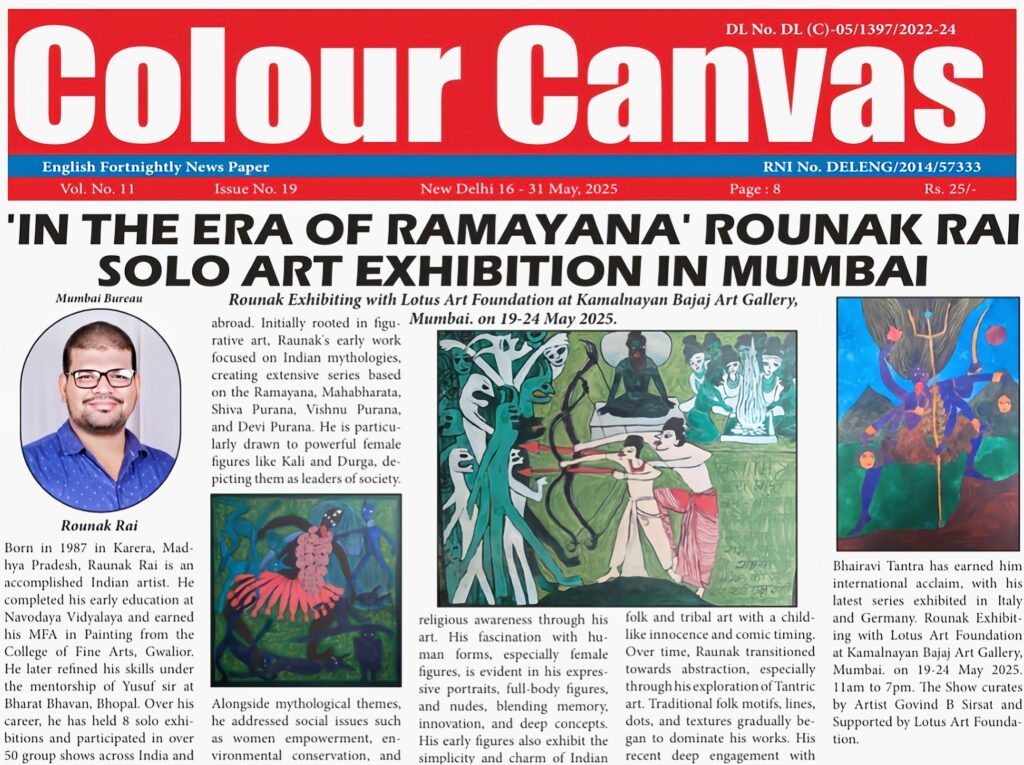
Welcome To My Website
The Lyrical Lineage of Rounak Rai — A Contemporary Folk Vision
In an era where digital precision dominates the visual landscape, Rounak Rai emerges as a compelling voice who reclaims the tactile, rhythmic, and symbolic power of traditional Indian visual language—reinterpreted through a contemporary lens. His paintings, rich in acrylic and ink, are instantly recognizable not merely for their mythological references but for their signature style, which bridges the sensibility of indigenous folk art with the expressiveness of modernist figuration.
At the heart of Rai’s style lies a distinct visual dialect: elongated limbs, expressive almond eyes, dramatic hand gestures, and carefully constructed postures speak not just of form but of emotion. Figures are framed within flat, boldly colored spaces, yet the compositions carry deep narrative movement. Decorative borders, repeated motifs, and the prominence of text in Devnagari script evoke both Pattachitra and Madhubani, yet his rendering is unmistakably his own—raw, poetic, and deeply human.
His line work is neither ornamental nor purely illustrative—it is structural and emotional. The contour lines—often in black ink—carry weight, tension, and sometimes even humor. They guide the eye not just around forms, but through them, inviting the viewer to pause and observe the layered emotional world beneath stylized faces.
Rai’s use of limited yet high-contrast palettes—dominantly reds, blacks, greens, and blues—creates psychological atmospheres within the otherwise two-dimensional plane. His characters are dressed in rhythmic fabric patterns, and yet, remain spiritually uncluttered. The presence of Hindi texts within the compositions further anchors the work in regional idiom, not as annotation but as a parallel visual form—a poetic frame within the visual field.
What sets Rai apart is how he merges ritualistic storytelling with psychological intimacy. Even amidst epic narratives, the human experience remains central—devotion, duty, longing, resistance, grace. His brush does not chase realism, but something more eternal: the essence of gesture, the soul of memory, and the drama of dharma.
In an art world increasingly swayed by global aesthetics, Rounak Rai’s paintings are a powerful reminder that the local is universal, and that tradition, when reimagined with authenticity and vision, can speak profoundly to the present. The Sacred Geometry of Inner Vision: Exploring the Signature Style of Rounak Rai
Rounak Rai, a contemporary Indian artist from Karera, Madhya Pradesh, is rapidly gaining recognition for his spiritually charged, symbolically dense, and aesthetically arresting works. His paintings are a visual meditation—an intricate dance of line, form, texture, and color—rooted deeply in Tantra, metaphysical symbolism, and ancient Indian philosophical thought. The images above are powerful exemplars of his distinctive style, and taken together, they showcase a body of work that is both deeply personal and universally resonant.
A Language of Lines, Symbols, and Sacred Energy
At first glance, Rai’s works evoke the visual rhythm of sacred geometry. But beyond their surface symmetry lies a deeper spiritual architecture. His signature technique involves densely layered linear patterns, precise geometrical forms (triangles, circles, and ellipses), and symmetrical compositions that mirror inner and outer cosmic order. Lines become mantras; textures turn into tactile meditations.
In paintings like “Tantra” (3×3 ft, Acrylic on Canvas), we see an interplay of triangular, circular, and organic forms that suggest both the yoni and lingam, the twin symbols of creative energy in Tantric philosophy. Rai uses a restrained yet radiant palette to evoke the presence of Shakti and Shiva, binding form and void, energy and consciousness. The central vertical axis, a recurring motif in his work, represents the sushumna nadi (central energy channel) through which kundalini ascends—a subtle nod to yogic mysticism.
Repetition, Ritual, and the Spiritual Act of Mark-Making
A defining element of Rounak Rai’s style is his use of repetitive lines and marks—etched, painted, or drawn with meticulous care. These repetitive gestures carry a meditative intent, transforming the act of painting into a ritual. The second artwork (green-toned with hypnotic spirals and a central vertical form) reflects this devotion to process. It suggests the presence of an abstract deity or inner eye, possibly referencing the bindu, the cosmic seed point in Tantric cosmology.
“Linga 8” and the Abstracted Divine
In “Linga 8” (Mixed Media on Canvas, 60×72 inches, 2024), Rai deepens his exploration of the abstract divine. The canvas is textural, nearly sculptural—rich with tactile surfaces and molten, dripping pigments. Here, the lingam, a primordial symbol of generative power, emerges not just as an object of worship but as an aesthetic presence. The energy is channeled through vertical shafts of color and shadow, invoking fire, ascension, and transformation. The dark horns on either side subtly suggest Nandi (Shiva’s bull), adding another layer of meaning without explicit representation.
Tantric Feminine and Visual Mandalas
The final image, dominated by a central blue-pink triangular form, reflects Rai’s continuing inquiry into the feminine principle. The tightly interwoven lines form an eye-like yantra, pulsating with meditative resonance. The painting doesn’t just depict a form; it invokes it—calling the viewer to introspection. These are not images to be “understood” in the literal sense, but to be experienced, like a mantra or mudra. The mandala-like structure invites stillness and reflection, encouraging a pause in the viewer’s gaze and breath.
The Fusion of the Traditional and the Contemporary
What makes Rounak Rai’s work stand out is how he integrates ancient Indian spiritual motifs with modern abstraction. There’s no overt religious iconography, yet the spiritual charge is undeniable. He does not copy mythological figures; he channels their essence through color, shape, and rhythm. His paintings serve as portals—not to temples, but to the internal sacred space within the viewer.
Rai’s works often reference Tantric diagrams (yantras), kundalini awakening, chakras, and energy centers, but always through his own symbolic vocabulary. He isn’t merely illustrating philosophy; he’s interpreting it, through the language of the intuitive line.
Conclusion: A Sacred Artistic Journey
Rounak Rai’s paintings are deeply rooted in Indian spiritual tradition but executed with the modern artist’s freedom of abstraction and innovation. His practice feels timeless, yet relevant—drawing viewers into a realm of introspection, transcendence, and silent intensity.
Through painstaking line work, geometrical layering, and textured surfaces, Rai constructs a visual yantra—a field where the material dissolves into the spiritual. His canvas becomes a meditation space, and his art, an invitation to see beyond the seen.
As contemporary Indian art continues to evolve, Rai’s work stands as a bold reminder that the sacred and the avant-garde need not be separate paths—they can meet, as they do here, in sacred geometry and sacred gesture.
